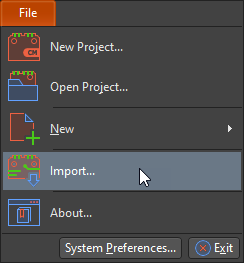3 Electronic Devices Whose Concepts Preceded PCB Design Capabilities
Table of Contents
Do you ever accidentally find old electronic devices while looking through your basement? Walkman cassette and CD players, a VHS player, if you’re lucky a Sega Genesis? I’m sure some of those gizmos were state of the art when you got them. Now they’re nothing more than nostalgic relics from earlier days. All old devices were once new, but not all new devices were once old. There are, however, a few notable exceptions. Apple’s Macintosh Portable, Oakley’s Thump MP3 sunglasses, and Nintendo’s Virtual Boy were all devices that predicted the future. Unfortunately, these precursors weren’t very practical. Let’s look at how these devices shot for the stars and broke apart during liftoff.
Macintosh Portable
Apple has been hailed as a visionary company; however, the Macintosh Portable might have looked too far into the future. An ancestor of the laptop, the Macintosh Portable went places no computer had previously thought possible. However, it went there slowly. Weighing in at 16 pounds, the Macintosh “Portable” was anything but. I currently own a 17” MacBook Pro that only weighs 6.6 lbs. Maybe Apple thought computer engineers weren’t getting enough exercise. One reason the Portable was so heavy was the lead acid battery that gave it an impressive 8-10 hour battery life.
Macintosh Portable next to a Macbook Pro. Image Credit: Flickr User colecamp
While the Portable packed on the pounds, one thing it could have used more of was memory. The Portable came standard with a state of the art 40 MB hard drive and 1.4 MB floppy drive. While today we may laugh at that minuscule amount of storage, it was the standard back in the day. The user could opt to replace the hard drive with another floppy drive, which would reduce the price. Speaking of price, the Macintosh Portable cost around $7,000 in 1989. That’s a lot of money to spend on what is today an extremely large paperweight. In addition to its long-term storage, the Portable boasted a whopping 1 MB of ram. Take a look at this breakdown to see everything pulled apart in detail.
I would only call the Macintosh Portable a half “fail.” With 8-10 hours of battery life, a 10-inch screen, and general wedge shape, the Portable resembles the laptops of today. That being said, the limited memory technology of the time and the insanely high price point crippled the Portable. Modern technologies give us access to computers with similar screen sizes and battery life, but with much more storage at a fraction of the cost.
Oakley Thump
You know how you feel when you’re out and about with some cool new shades on? Oakley Thumps sunglasses would probably not give you that feeling. Aside from being a crime against fashion, these sunglasses were also a crime against electronics. The premise of Thump sunglasses was simple, they’re sunglasses that also play music. Even during the coming of age of MP3 players, I don’t know why they thought this was a good idea.
The only thing I hate worse than cheap electronics are cheap electronics that are actually expensive. Thump sunglasses fall into that category. Combining all the durability of a pair of plastic sunglasses with an upwards of $400 (in 2005) price point. What does $495 get you? It gets you 256 MB of NAND flash storage, that’s what. That’s around 50 songs. Keep in mind that there were other MP3 players, like the iPod, that could store 40 GB of music for the same price.
You too could look this cool. Image Credit: Flickr User Jeff.Dlouhy
While the Thump sunglasses have no direct corollary today (thank goodness), they may be closest to sports MP3 earbuds. Sony entered that market with a pair of Walkman waterproof MP3 earbuds. These earbuds dwarf the Thump’s 256 MB onboard storage with 4 GB in a similar form factor. The Thump sunglasses may also remind you of Google Glass. While Google Glass are glasses, they share almost no features with the Thump, aside from failure. In 2015 Google decided that the world wasn’t quite ready for a wearable heads-up display. So maybe I’ll be writing this same article about Google Glass in 15 years.
Nintendo Virtual Boy
One of the more famous failed “futuristic” products is Nintendo’s Virtual Boy. The Virtual Boy was a precursor to current virtual reality (VR) headsets...back in 1995. With about 20 games, the Virtual Boy did not give players breadth of fun that gamers enjoy today. Also, a battery life of around 4 hours (with 6 AA batteries) meant that the length of play was a bit short. Luckily the Virtual Boy came with an AC adapter so you could damage your eyes for more than 4 hours straight.
As opposed to current VR headsets that boast HD resolutions, the Virtual Boy’s display was only 384x224. The interesting thing about the display is that it used LEDs and oscillating mirrors instead of a “screen” display. The Virtual Boy cost $175, which is a much more reasonable price than our two previous contenders. Even so, the Virtual Boy only sold 770,000 units, which is an abysmally low amount for a game system.
They even predicted the form of current VR headsets. Image Credit: Flickr User HapasFine
These days PCB designers are able to fit supercomputer chips, high-resolution displays, and spatial sensors into a device the same size as the Virtual Boy.
I hope you didn’t find any of these devices in your closet. It’s never nice to see an article dissing old devices that you spent a fortune on. While all of these gadgets were visionary, none of them were really very practical. Today’s technology and PCB design techniques have allowed us to recreate all these old devices and more. Now we have laptops that fit in manilla envelopes, glasses with heads-up displays, and VR headsets that take up way too much of our time.
Maybe you’re working on the current version of some of these products. Maybe you’re working on a futuristic device that people will be making fun of in 20 years. Either way, you’ll need some cutting edge software that can help you make the best PCBs you can. When you need to access an easy-to-use PCB layout tool that includes everything needed to build high-quality manufacturable circuit boards, look no further than CircuitMaker. All CircuitMaker users also have access to a personal workspace on the Altium 365 platform. You can upload and store your design data in the cloud, and you can easily view your projects via your web browser in a secure platform.
Start using CircuitMaker today and stay tuned for the new CircuitMaker Pro from Altium.

















